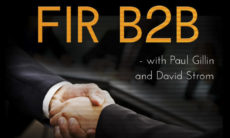It’s been seven full years since O’Reilly Media organized the first Web 2.0 conference, and a handful of years since terms like Enterprise 2.0 and Social Business were introduced to our business jargon. However, the reality in 2011 is that the internal use of social technologies in large enterprises across the globe still faces an interesting situation: while most large companies have already gone through some 2.0 experimentation, I would dare to affirm that very few of them–or none at all–have made a complete transition from the so-called 1.0 way of communicating and collaborating to the promised land of pervasive internal use of social media-like channels. Even those companies who started this journey early are still seeing a vast majority of their population communicating and collaborating pretty much in the same way they did in the early 2000s. Does that mean that the Enterprise 2.0/Social Business nirvana is just a pipe dream? Will that ideal of an efficient marketplace for information fueled by social interactions ever be realized within the Enterprise? Oddly enough, my answer is “yes” to both questions. To understand why, we need an understanding of the built-in Return-on-Investment (ROI) framework most of us rely on most of the time, and a trip to a not-so-distant past related to other game changing technology.
Despite the fact that many social media and social business advocates argue that there is no use of ROI when it comes to the use of social technologies, a very basic ROI assessment is prevalent in most people’s mind every time we make a decision–and that happens dozens, or even hundreds of times every day. From the moment you decide what to do when your alarm clock goes off in the morning to what you’ll do after the kids go to bed at night, you run that built-in algorithm that takes into consideration your investment (of money, time, or effort), your potential returns (pleasure, monetary gains, cost avoidance, or the satisfaction of having done the right thing), the risk you’re incurring (likely or unlikely positive and negative outcomes), and the time horizon (instant gratification, on-going benefits, or the promise of a big reward at the end). Those are pretty much the same variables we use in the more formal investment formulas we learned at business schools.
Likewise, once social technologies are made available to employees in an organization, each one of them will go through that same algorithm several times a day. The proverbial “what’s in it for me” (WIIFM) towards the use of social business platforms is not a decision made only once by each individual in your workforce. It will happen thousands of times throughout their working hours, for months and years to come. In large enterprises, it’s very common to observe only a small percentage of their employees sustaining activities in social platforms for a long period of time. One of the reasons for that pattern is that we often assume that having a good one-time WIIFM answer is sufficient. It’s not. In practice, your burden is to have a good WIIFM answer every time they can choose between the 1.0 and the 2.0 ways of doing things. You are not selling a packaged good, you are selling a new behavior that’s challenged several times a day. Furthermore, you need to provide both the instant gratification and the promise of long term gains. Back to the ROI framework, it’s not only about the investment or the returns: you have to account for the time horizon and the risk.
This is no different from trying to convince people to eat healthy food, to exercise, or to stop smoking. The WIIFM–or returns–is very clear in all those three cases. But, as my friend Jeff Bowers told me once, you don’t look like Arnold Schwarzenegger after a week in the gym, nor have a heart attack immediately after you go for a cigarette break. There’s always another day to start that new great diet people are raving about.
Because some of the benefits from the use of social technologies are only realized in the long term, wide adoption is currently hard–if not impossible–to achieve. Social media innovators, enthusiasts, and evangelists are often frustrated by anybody who disregards the potential benefits and sees only the risks behind doing things differently. They often mention a supposed quote by Henry Ford to mock the lack of vision of late adopters: “if I ask my customers what they want, they’d ask for a faster horse.” They feel like they are introducing the equivalent of an automobile for today’s generation, but get upset when their audience only fears that automobiles are risky, dangerous to pedestrians and drivers alike, and too complicated. The truth many early adopters don’t see, however, is that automobiles WERE risky, dangerous, and too complicated when first introduced. And so are social technologies now.
Cars were not just “released to the public” and did not get immediate acceptance and wide adoption. There was a co-evolution of technology, the regulatory framework governing the use of it, and social behavior, that together eventually led to the widespread use of cars in a reasonably safe, useful, and practical way. It’s fair to assume that many people in the early 20th century were afraid of co-existing with others driving cars, or driving one themselves. Some probably couldn’t see why cars would be better than horses. After all, a horse could be fed from the grass in the backyard, take rough road conditions and run in speeds safer for large urban populations. However, over time, the benefits clearly trumped the risks and limitations, and motor vehicles became the norm, not the exception.
I suspect that the use of social technologies will follow a similar pattern–but I hope that will happen within a shorter time frame. Coming back to the questions I posed at the beginning of this post: the idea of every business and individual worker embracing and fully realizing the benefits of social technologies is still a distant reality and is unlikely to ever have 100% reach–the same way that even today some people still don’t like cars or are uncomfortable with airplanes. But I fully believe that the use of social technologies for enterprise communications and collaboration will come to mainstream in the future. It just won’t happen as fast as many predicted, and will require the maturing of the technology, governance mechanisms and social standards.








